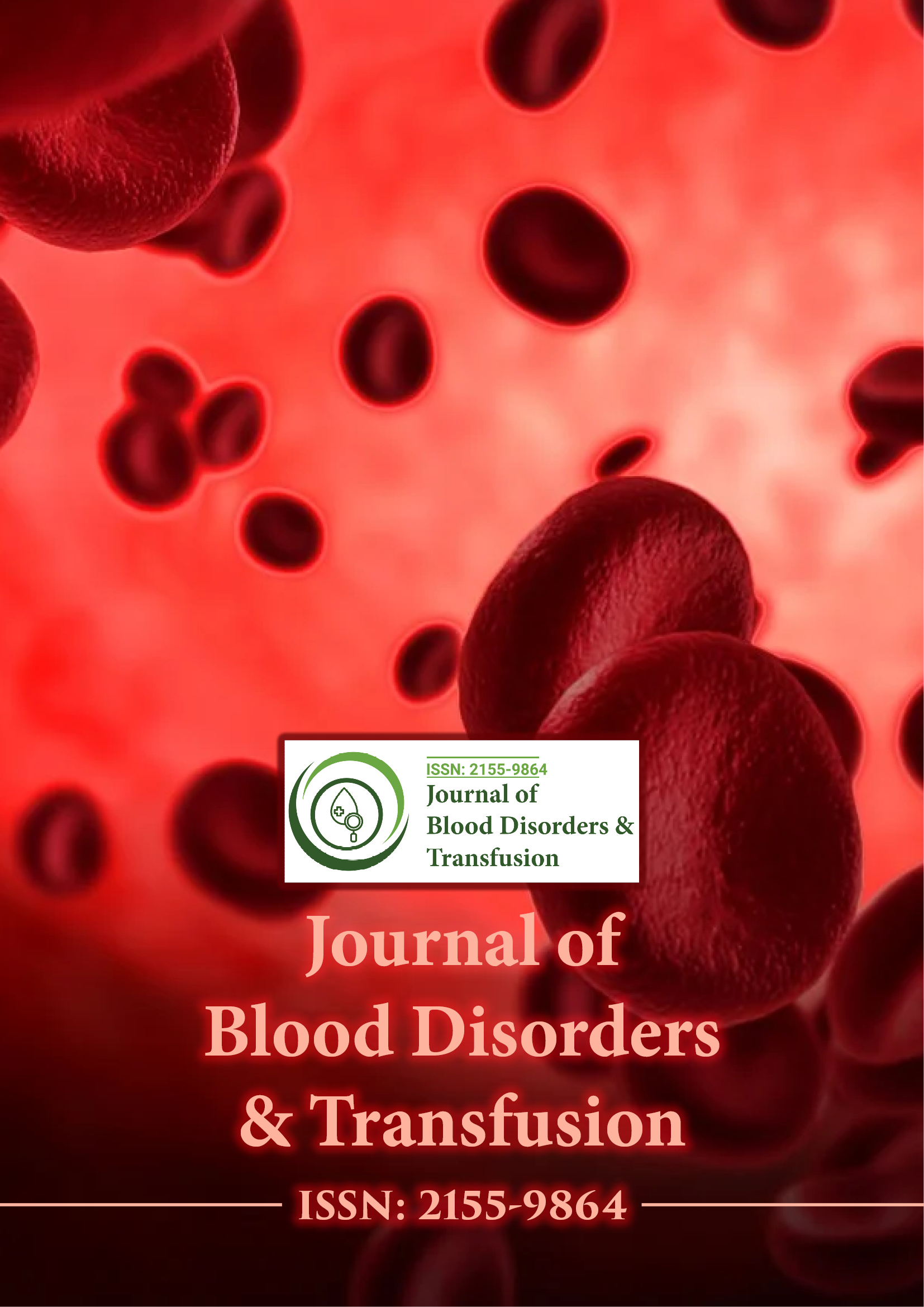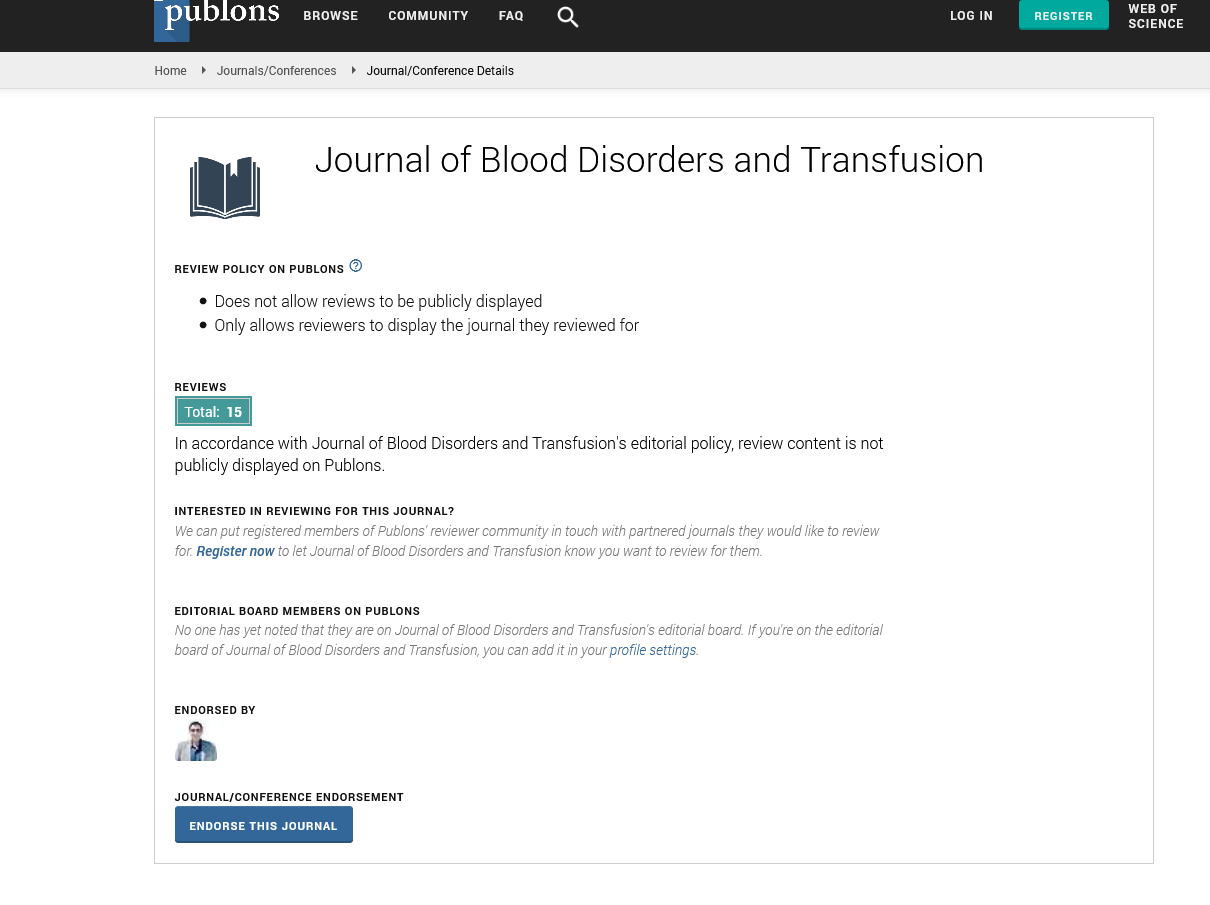Indexed In
- Open J Gate
- Genamics JournalSeek
- JournalTOCs
- Ulrich's Periodicals Directory
- RefSeek
- Hamdard University
- EBSCO A-Z
- OCLC- WorldCat
- Proquest Summons
- Publons
- Geneva Foundation for Medical Education and Research
- Euro Pub
- Google Scholar
Useful Links
Share This Page
Journal Flyer

Open Access Journals
- Agri and Aquaculture
- Biochemistry
- Bioinformatics & Systems Biology
- Business & Management
- Chemistry
- Clinical Sciences
- Engineering
- Food & Nutrition
- General Science
- Genetics & Molecular Biology
- Immunology & Microbiology
- Medical Sciences
- Neuroscience & Psychology
- Nursing & Health Care
- Pharmaceutical Sciences
Short Communication - (2022) Volume 13, Issue 10
Eosinophilia: Epidemiology, Assessment, and Medications
Wen Min*Received: 04-Oct-2022, Manuscript No. JBDT-22-18595; Editor assigned: 06-Oct-2022, Pre QC No. JBDT-22-18595 (PQ); Reviewed: 21-Oct-2022, QC No. JBDT-22-18595; Revised: 31-Oct-2022, Manuscript No. JBDT-22-18595 (R); Published: 08-Nov-2022, DOI: 10.4172/2155-9864.22.13.529
Description
Bone marrow produces blood granulocytes known as eosinophils, and IL-5, IL-3, and GM-CSF stimulate the production of cytoplasmic granules, which contain basic proteins and form bonds with acidic dyes like "eosin." For 4.5 to 8 hours at a time, they circulate. Particularly in the digestive and respiratory tracts, they might linger in tissues for 8 to 12 days. Eosinophils make up less than 5% of the circulating leukocytes. Eosinophilia is defined as an increase in the amount of circulating eosinophils above 500/mm [1].
Based on counts, eosinophilia can be categorized as mild, moderate, or severe. Both detectable tissue eosinophilia and absolute eosinophil counts of more than 1500/mm3 on two different occasions, at least one month apart, are thought to be signs of hyper eosinophilic syndrome.
Epidemiology
The incidence and prevalence of eosinophilia are poorly understood. Eosinophilia does not favour one sex over another. However, there may be geographical consequences depending on the cause. Parasitic infestations are more common in tropical countries. Allergy-related illnesses are relatively common in wealthy countries. Idiopathic hypereosinophilia is typically diagnosed between the ages of 20 and 50, while it has been documented to occur at both extreme ends of the age spectrum [2].
Pathophysiology
The bone marrow is where eosinophils differentiate and stop growing after departing. They spend much of their time in tissues, away from the vasculature. In eosinophil-related disorders, eosinophils are attracted to the afflicted tissues. Synthesis of IL-5 and immune reactions mediated by T helper-2 cells lead to eosinophilopoiesis and eosinophil activation. A crucial cytokine involved in the production and activation of eosinophils is IL-5. When triggered, eosinophils degranulate and release cationic proteins into the tissues via which they function.
These released proteins, which may also be proteolytic enzymes, may also cause damage to the host wall. Eosinophils also secrete cytokines like IL-10 and IL-14 that help to maintain homeostasis and regulate the immune system [3].
An eosinophil has a segmented nucleus and a diameter of 12 to 17 m. It has many proteolytic enzyme-containing cytoplasmic granules. The granules are made up of four main proteins - Eosinophil Derived Neurotoxin (EDN), Major Basic Protein (MBP1), Eosinophilic Cationic Protein (ECP), and Eosinophil Peroxidase (EOP). They use Romanowsky stains to colour the orange-red.
Comprehensive history taking and careful physical examination are vitally critical, and sometimes enough, for diagnosis due to the disease's varied symptoms and severity ranging from mild to end-organ destruction. Common organ systems affected include those of the gastrointestinal, respiratory, and skin. Numerous disorders, such as myeloproliferative and lymphoid neoplasms, Churg Strauss syndrome, and Drug Rash with Eosinophilia and Systemic Symptoms (DRESS) syndrome, can cause constitutional symptoms such low-grade fevers, night sweats, lethargy, and weight loss [4].
Skin rashes and pruritus are common in eczema and cutaneous T cell lymphoma. A number of illnesses, such as bronchopulmonary aspergillosis, Loeffler's syndrome, hay fever, asthma, reactive pulmonary eosinophilia, and Churg-Strauss syndrome, can cause dyspnea, coughing, and wheezing. Identification of diseases, parasitic infestations, and pharmacological adverse responses is aided by a thorough travel history, work environment, drug history, and history of close encounters with HIV and syphilis. A thorough physical examination should include a skin evaluation, lung auscultation to listen for rhonchi or wheezes, and an abdominal exam to check for splenomegaly.
Eosinophilia secondary causes should be ruled out first. The first step in diagnostic testing should be a peripheral smear. Peripheral blood can be used for FISH analysis and cytogenetic testing. Cytopenias or cytophilias that are concurrent, if they exist, can aid in diagnosis. A bone marrow biopsy, karyotype, and genetic chromosomal screening may be necessary in that situation.
Treatment
Acute/chronic Myeloid Leukaemia, Myelodysplastic Syndrome, B12 level, tryptase level, cytogenetic/immunophenotypic tests, and marrow abnormalities all aid in the diagnosis of chronic mastocytosis. The diagnosis of cutaneous illnesses such pemphigoid, eczema, mycosis fungoides, and Sezary syndrome is aided by skin biopsies when skin rashes are present. Chest imaging aids in the identification of aspergillosis, Loeffler syndrome, and Churg Strauss syndrome. Assessing for splenomegaly using an abdominal ultrasound is helpful. Examining one's stool can help detect parasite infestations [5].
The underlying cause affects treatment management. The treatment's aim is to reduce the harm that eosinophilia causes to end organs. An approach that is cautious can be used in minor cases that don't have any symptoms or indications of organ involvement. Treatment with IV steroids is crucial in emergency situations involving hemodynamic instability or organ failure.
Conclusion
Treatment for some illnesses, such as infections or allergies to certain foods and drugs, can be as straightforward as stopping the offending substance or administering antibiotics. A multidisciplinary strategy combining haematologists, pulmonologists, and infectious diseases may be required in some situations, however, because to the varied clinical presentations and multi-systemic involvement. Hydroxyurea and interferonalpha have shown effective in treating steroid-resistant patients of chronic eosinophilic leukaemia and hypereosinophilic syndrome.
REFERENCES
- Lambrecht BN, Hammad H. The immunology of asthma. Nat Immunol. 2015; 16(1):45–56.
[Crossref] [Google Scholar] [PubMed]
- Rosenberg HF, Dyer KD, Foster PS. Eosinophils: changing perspectives in health and disease. Nat Rev Immunol. 2013;13(1):9–22.
[Crossref] [Google Scholar] [PubMed]
- Giembycz MA, Lindsay MA. Pharmacology of the eosinophil. Pharmacol Rev. 1999; 51(2):213–340.
[Crossref] [Google Scholar] [PubMed]
- Rossi D, Zlotnik A. The biology of chemokines and their receptors. Annu Rev Immunol. 2000; 18:217–242.
[Crossref] [Google Scholar] [PubMed]
- Palgan K, Bartuzi Z. Platelet activating factor in allergies. Int J Immunopathol Pharmacol. 2015;28(4):584–589.
[Crossref] [Google Scholar] [PubMed]
Citation: Min W (2022) Eosinophilia: Epidemiology, Assessment, and Medications. J Blood Disord Transfus. 13:529.
Copyright: © 2022 Min W. This is an open-access article distributed under the terms of the Creative Commons Attribution License, which permits unrestricted use, distribution, and reproduction in any medium, provided the original author and source are credited.

